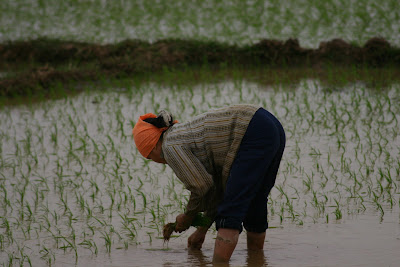Dr. Gino Strada wrote the following in Green Parrots:
"The countries, the names, the skin colors change, but the story of these wretched ones is tragically similar. There is the one who is walking in the meadow, the one who is playing in the backyard or who is shepherding goats, the one who tills the ground or who gathers its fruits. Then the blast...Djamila felt a metallic click under her foot and had a fraction of a second to think before her left leg disintegrated...Many others like Esfandyar do not remember a thing. A deafening noise and they are hurled on the ground....They wrapped Esfandyar in a big sheet, and they loaded him in the back of a farm truck. Esfandyar did not complain - the father told us - not of the pain, nor of the uneven roads. It was as if he were sleeping. And he was still in that drowsy state when he arrived at the emergency room of our hospital...He woke up different, Esfandyar, without an arm and a leg, and he will remain different, a young disabled person in a country so poor that it cannot afford to care for him."
In 1994 Dr. Strada founded
Emergency, a non-profit organization that provides landmine victims with free medical assistance.
Emergency helps civilian war victims, especially with landmine related injuries. Currently,
Emergency is helping landmine victims in Afghanistan, Cambodia, Iraq, Sierra Leone, Sudan and Sri Lanka.





















